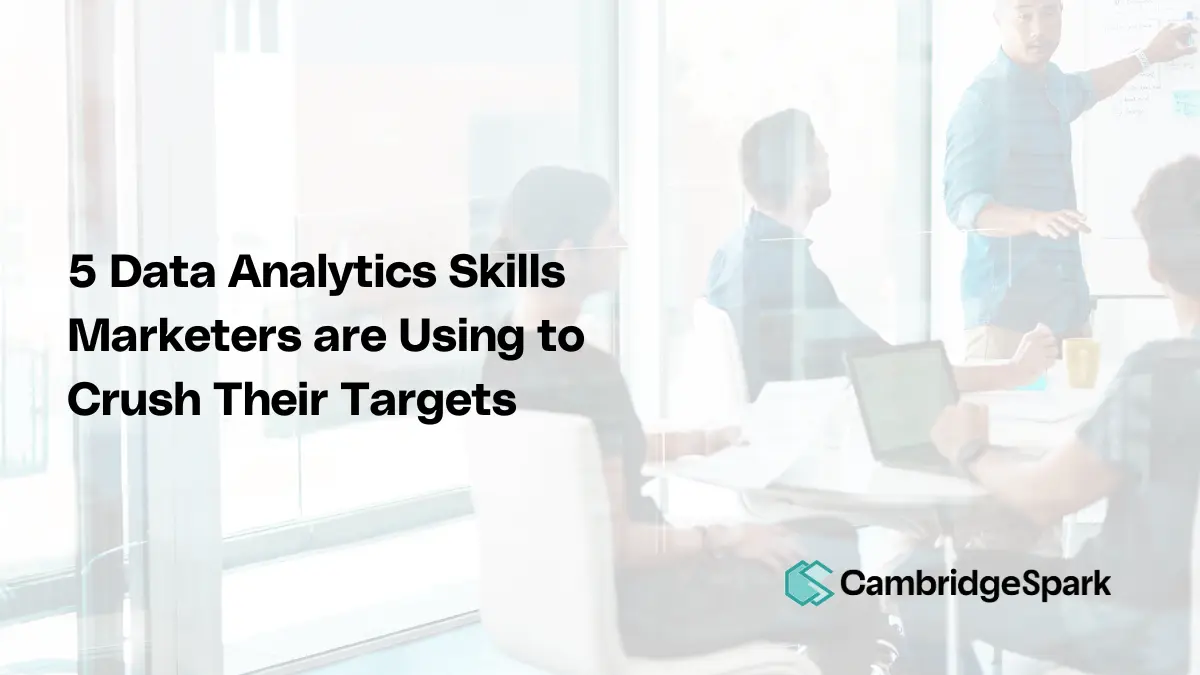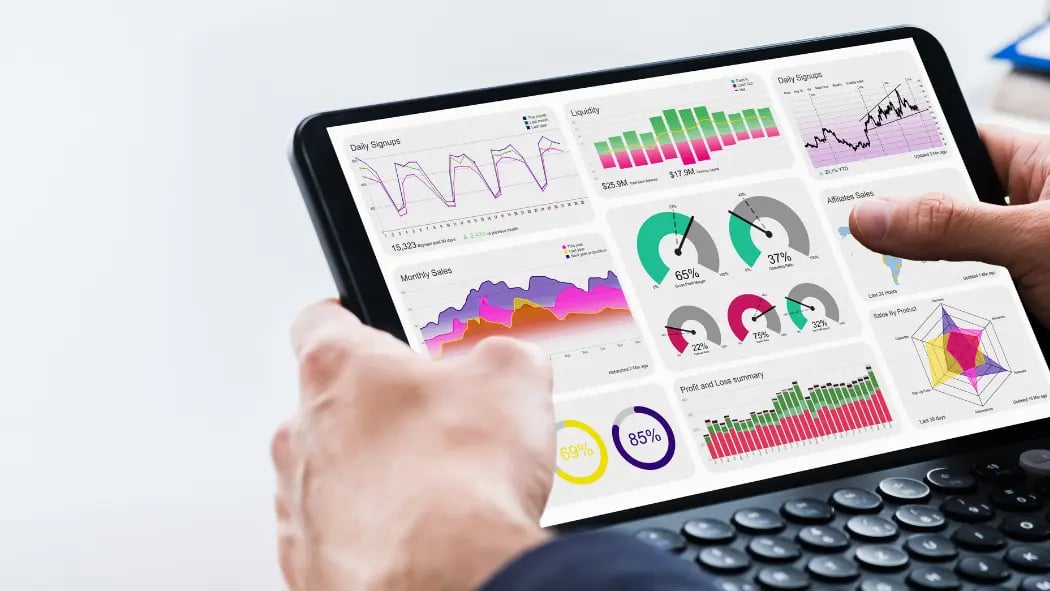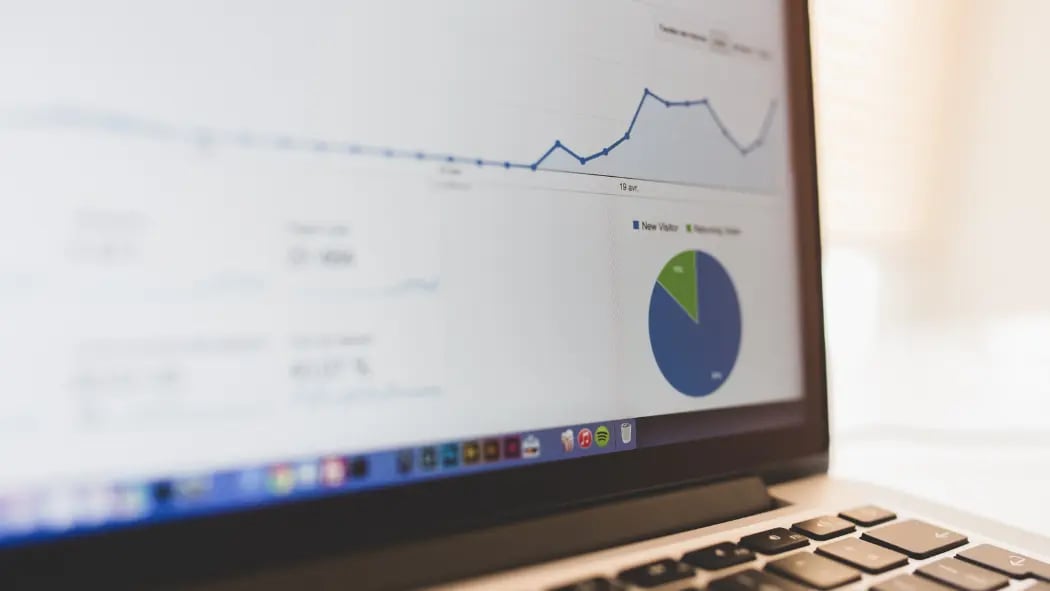
“Marketing without data is like driving with your eyes closed” Dan Zarrella, former Social Media Scientist, Hubspot.
This quote is still as true today as it was 10 years ago. The significance of data analytics in marketing cannot be overstated.
Data analysis stands at the forefront of modern marketing strategies. It allows you as a marketer to extract valuable insights that enhance and guide your future campaigns.
And not only does it enhance the quality of your marketing choices, but it also provides the necessary evidence to support your decisions.
But how are marketers using data analysis today to make an impact?
Here we’ll be exploring 5 ways you can use data to not only meet your marketing goals, but crush them.
1. Data processing with Python, Pandas, and SQL
First and foremost, you need to be able to trust that your data is reliable.
The ability to efficiently process and cleanse data is a cornerstone skill. Data processing is not just about handling vast amounts of information. It's also about ensuring that this information is accurate, relevant, and usable for strategic decision-making.
So let's look at the tools that make data processing possible.
Tools for data processing
Python: Python is a versatile programming language that has become a staple in the marketing analytics toolkit. Its simplicity and robust set of libraries enable marketers to manage and interpret complex data sets. Among these libraries, Pandas stands out for its data manipulation capabilities.
- Python: Python is a versatile programming language that has become a staple in the marketing analytics toolkit. Its simplicity and robust set of libraries enable marketers to manage and interpret complex data sets. Among these libraries, Pandas stands out for its data manipulation capabilities.

- Structured query language (SQL): SQL allows for the extraction of specific information, manipulation of data, and the performance of complex queries to gain more detailed insights.
Practical applications of data processing in marketing with Python, Pandas and SQL
The practical applications of data processing in marketing are vast. Let's explore a few of them:
- Data cleansing: A marketer can use Python and Pandas to cleanse a customer database, removing duplicates and correcting errors. This ensures that the data being shown to you is reliable and accurate.
- Segmentation of customer data: Pandas can be used to analyse customer behaviour patterns, helping in segmenting the market and tailoring campaigns accordingly.
- Discovering insights and patterns: Marketers can use SQL queries to pull specific data sets from large databases, such as customer interactions over a specific period or the performance metrics of various marketing campaigns. This data can then be further processed and visualised using Python and Pandas, providing insightful and actionable marketing analytics.
The combination of these tools offers a comprehensive approach to handling marketing data. Python, Pandas, and SQL equip marketers with the capabilities to not only understand their audience better but also to design more effective marketing strategies with reliable data that can be queried.
2. Advanced data visualisation techniques
Data visualisation techniques are invaluable for organisations when it comes to communicating data insights effectively to internal and external stakeholders.
Transforming complex data sets into coherent visual narratives enables you to unlock valuable insights hidden within your data. These visualisations can then be shared with the rest of your team, who may not be as data fluent.
The role of data visualisation in marketing analytics
Through visual representation, data that once seemed like a labyrinth becomes clear, revealing patterns, trends, and correlations that might otherwise go unnoticed. This clarity is pivotal for marketers who rely on data to inform strategy, assess campaign performance, and make proactive decisions.
 "In my project, I was looking to create a report or dashboard that would be accessible to the whole marketing team to use, that would be filterable by a range of variables. This dashboard would make it easy to analyse how different sets of customers, on different products, levels and sources perform, and in the future will make it possible to easily measure the ROI of each of them.”
"In my project, I was looking to create a report or dashboard that would be accessible to the whole marketing team to use, that would be filterable by a range of variables. This dashboard would make it easy to analyse how different sets of customers, on different products, levels and sources perform, and in the future will make it possible to easily measure the ROI of each of them.”
- Dominic Graydon, L4 Data Analyst Apprentice
Here are a few examples of data visualisations:
- Line charts
- Pie charts
- Heat maps
- Bar graphs
- Scatter plots

Tools used for data visualisation
When it comes to bringing these visual narratives to life, tools like Tableau and Power BI are key:
- Tableau: With its robust visualisation capabilities, Tableau allows marketers to create complex, interactive dashboards with ease.
- Power BI: This software integrates seamlessly with existing Microsoft ecosystems, making it a go-to for many businesses. Its strength lies in its ability to add data from various sources, providing a comprehensive view of marketing analytics.
Application of data visualisation in marketing
Here are a few ways you can apply data visualisation as part of your marketing strategy:
- Visualising customer purchase patterns: Highlighting which products are in demand can guide marketing campaign decisions.
- Analysing content engagement: Visual data can inform content strategy, ensuring that it resonates with the target audience and is engaging.
- Visualising customer journeys: Marketers can track the touch points that lead to conversions, identify bottlenecks in the sales funnel, and tailor their strategies accordingly.
3. Predictive analytics and machine learning
Predictive analytics and machine learning (ML) are advanced technologies that are reshaping how marketers anticipate customer needs, preferences, and future behaviours.
The growing importance of predictive analytics in marketing
The core of predictive analytics lies in its ability to use historical data to forecast future events. By using predictive analytics, you can transition from reactive to proactive planning, ensuring that your strategies are not just current but also future-ready.
This transition is critical in an era where customer preferences change rapidly, economic factors are constantly affecting customer habits and competition is fierce.
Predictive analytics will allow you to stay one step ahead.
Tools for predictive analytics and machine learning
Implementing predictive analytics and machine learning in marketing analytics requires robust tools:
- Python: Python can analyse past data and learn patterns, which can then be used to predict future outcomes or trends.
- Scikit-learn: Scikit-learn in particular, offers a wide array of algorithms for predictive modelling and is valued for its simplicity in handling machine learning tasks.
 “The stuff that really caught the attention of the management team was a lot of the automation work the team was doing—using Python scripts to automate very complex, large data processing jobs. Automating manual processes and creating ML-powered recommendation engines was where we were freeing up a lot of time for the teams and very quickly making an impact and ROI.”
“The stuff that really caught the attention of the management team was a lot of the automation work the team was doing—using Python scripts to automate very complex, large data processing jobs. Automating manual processes and creating ML-powered recommendation engines was where we were freeing up a lot of time for the teams and very quickly making an impact and ROI.”
- Jonathan Wagstaff, Director of Market Intelligence, DCC Technology
Real-world applications of predictive analytics in marketing
Here are a few examples of how predictive analytics and machine learning are used in marketing:
- Chatbots: Machine learning powers intelligent chatbots that can simulate human-like interactions, providing personalised customer service and support. These AI-driven chatbots can handle queries, provide recommendations, and even upsell products based on customer interaction history.
- Content creation: Predictive models can analyse past content performance to suggest topics, formats, and even the tone of voice that is most likely to resonate with the target audience, optimising content marketing efforts.
- Campaign targeting and optimisation: Machine learning algorithms can analyse vast amounts of data to identify the most effective channels and customer segments for ad placements. They can also continually optimise campaigns in real-time, ensuring that marketing spend yields the highest possible ROI.
Daniel Twells, Data Science and Insights Manager at Marks & Spencer saved the company excess marketing costs by using machine learning to help inform targeting for campaigns.
By harnessing these technologies, you can gain a more accurate and nuanced understanding of the market, driving more impactful marketing campaigns, whilst adopting a proactive approach.
4. Using recommender systems for targeted marketing
According to Salesforce research 80% of people surveyed said that the experience they have with a brand is as important to them as their products or services.
Recommender systems have emerged as a game-changing tool for brands that want to provide better, more personalised experiences for their customers.
These sophisticated systems are designed to predict and suggest products or services to customers, based on their past behaviours, preferences, and data patterns.
Businesses can effectively segment their customer data with recommender systems, leading to more targeted and successful marketing strategies and happier customers!
You can find out more about recommender systems in this article: 
What is customer segmentation?
Customer segmentation involves dividing a customer base into groups of individuals. These individuals will be similar in specific ways, such as age, gender, interests, and spending habits.
This segmentation is crucial for personalised marketing, as it allows businesses to tailor their messaging and offers to meet the unique needs and preferences of each segment, significantly increasing the chances of conversion.
In fact, 91% of consumers say they are more likely to shop with brands that provide offers and recommendations that are relevant to them.

Tools for customer segmentation and recommender systems
Several tools are instrumental in implementing effective customer segmentation:
- SQL: SQL is commonly used for querying and managing large datasets, which forms the basis of any customer segmentation analysis.
- Excel: Excel is often the go-to tool for initial data analysis and visualisation with its user friendly interface.
Tools for more advanced customer segmentation:
- Python: Python is crucial for developing recommender systems.
- R: Known for its statistical computing capabilities, R is excellent for data analysis and visualisation, playing a key role in uncovering patterns and trends in customer data.
Examples of successful recommender systems in marketing
We've no doubt all experienced Amazon's buyer journey and seen just how personalised customer experiences can be.
This level of personalisation has set a benchmark in e-commerce, leading to higher customer satisfaction and loyalty. But how did Amazon achieve this?
By analysing vast amounts of customer data, Amazon's algorithms can suggest products that are not only of interest to customers but also relevant to their current needs.
Amazon collects extensive customer data such as purchase history, browsing habits, search queries, and customer feedback.
They then use advanced data analytics and machine learning algorithms to segment customers into distinct groups based on factors like shopping behaviour, demographics, and preferences.

5. Measuring ROI with data analysis tools
Understanding the effectiveness of each marketing campaign you deliver is crucial for success. Measuring campaign performance and return on investment (ROI) acts as a compass, guiding you towards more effective decisions.
Identifying suitable KPI’s
Choosing suitable KPIs and metrics is the first step in measuring ROI. These can vary depending on your organisation’s goals but often include lead generation, conversion rates, and customer lifetime value.
Digital engagement metrics such as click-through rates, website traffic, and social media engagement are also vital in the era of digital marketing.
Data analytics tools for ROI analysis
Google offers free tools like Google Analytics, Google Search Console and Looker Studio that help you analyse digital engagement metrics.
Here are tools you can use for more advanced ROI analysis:
- Python: Python enables complex data manipulation, statistical analysis, and visualisation, making it an essential tool for in-depth data exploration.
- Natural Language Processing (NLP): NLP, a branch of artificial intelligence, assists in analysing and understanding human language data. It's used in marketing to extract insights from text data like customer reviews, social media chatter, and support tickets, providing a deeper understanding of customer sentiments and trends.

Conclusion
As marketers harness the power of these technologies, they can expect optimised strategies, and achieve remarkable success.
This shift towards data-driven marketing is not only about keeping pace with technological advancements. It's also about setting new standards in customer engagement and business growth.
If you’re interested in upskilling with the Level 4 Data Analytics Apprenticeship to enhance your marketing strategy, get in touch with us via the form below.
-1.png)
Enquire now
Fill out the following form and we’ll contact you within one business day to discuss and answer any questions you have about the programme. We look forward to speaking with you.

